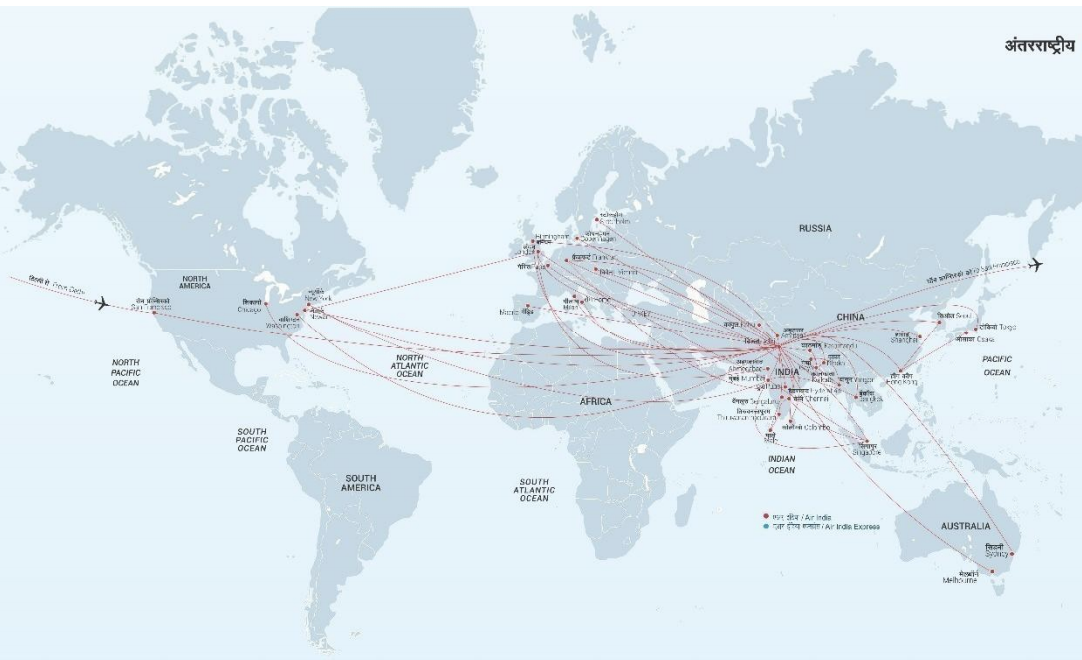Air India: why are there no suitors to buy the airline?
Plane Talk: ‘State-owned airlines can be outstanding’

Air India has long been the transatlantic traveller’s friend. The Indian national airline has “fifth freedom” rights between London and New York, which allows it to compete against British Airways, Virgin Atlantic and the US airlines even on a route nowhere near its homeland.
I like the aircraft Air India uses from Heathrow to Newark these days: very smart Boeing 787 Dreamliner jets, a big improvement on the old 747s. The service is excellent, including what I reckon is the best economy-class food across the Atlantic. And the fares can be tempting, too.
The airline was always first choice for short trips to the US which did not involving a Saturday night stay. British and American carriers still insist on ludicrous price-hikes for such trips: leaving on Virgin Atlantic next Monday returning on Sunday costs £777 return, but if you have the temerity to want to come back on Saturday then the fare surges by £600.
Yet I don’t fly on Air India much these days, because it has lost its edge across the Atlantic. Norwegian’s three-times daily service from Gatwick to New York JFK (also using 787s) is more flexible than Air India’s three-times-weekly flight between Heathrow and Newark.
Norwegian couldn’t care less whether or not you stay over a Saturday night; the price is simply the sum of two one-way fares. And if you happen to be aiming elsewhere in the eastern half of the US, Aer Lingus and its Icelandic rivals offer many more options.
The trend revealed in this distant corner of the Air India network recurs across the airline’s operations: younger, leaner competitors offering excellent service and stealing market share. The Indian national carrier is overdue for comprehensive restructuring.
So in March the government in Delhi put the airline (or at least 76 per cent of it) up for sale, hoping to raise some cash as well as finding someone to revitalise Air India. But despite extending the deadline, no prospective buyers appeared.
Why not? State-owned airlines can be outstanding. Exhibits A and B are Singapore Airlines, which is majority owned by the city-state’s government, and Emirates, wholly owned by the government of Dubai. Yet investors were not taken by the prospect of buying the Indian national carrier.
From a distance, Air India might look a good buy. It has a strong and recognisable brand anchored in a vast and fast-growing country, some excellent staff and a modern fleet. More compellingly, it has a valuable portfolio of slots at many of the world’s most desirable international airports. An asset-stripping investor could possibly raise a few billion dollars by selling off slots.
But the Indian government attached some unattractive strings to a purchase. The airline has $8bn (£6bn) of debt, and the buyer would be required to assume $5bn of it. So even if the airline were given away, a new majority owner would need to value it at over $5bn from the outset.
Furthermore, prospective buyers were told they would need to keep all 27,000 staff employed on the same terms for at least a year, meaning another 12 months of piling up debts. And that 24 per cent share held by the Indian government, with obligations such as maintaining aircraft to fly dignitaries around, is another deterrent.
The authorities in Delhi have always over-protected Air India. The country was way too slow opening up to competition, thereby encouraging inefficiency and allowing the airline to become bloated. Airlines perform and prosper when they are forced to compete on the world stage.
So I do not share the Indian government’s surprise that there are no suitors. Prospective investors will be thinking: do we really want to take on so much debt and staff employed on “legacy” contracts? Anyone who wanted to turn it around will know they have a fight on their hands.
Other airlines with cash looking for a home might have been tempted, but after watching Etihad make disastrous investments in a number of airlines including Air Berlin and Alitalia that appetite has been dulled.
It is sad when an airline with such a rich heritage, stretching back to 1932, is left on the shelf. But Air India has to be restructured to compete effectively against home-grown, privately run rivals as well as the Gulf giants.
The Indian government needs to put it through something like the US Chapter 11 bankruptcy procedure, known in the business as “the carwash” and then sell the whole thing. It remains to be seen whether that can happen politically, or whether Air India will be simply left slowly to wither as other airlines spread their wings.
Subscribe to Independent Premium to bookmark this article
Want to bookmark your favourite articles and stories to read or reference later? Start your Independent Premium subscription today.

Join our commenting forum
Join thought-provoking conversations, follow other Independent readers and see their replies